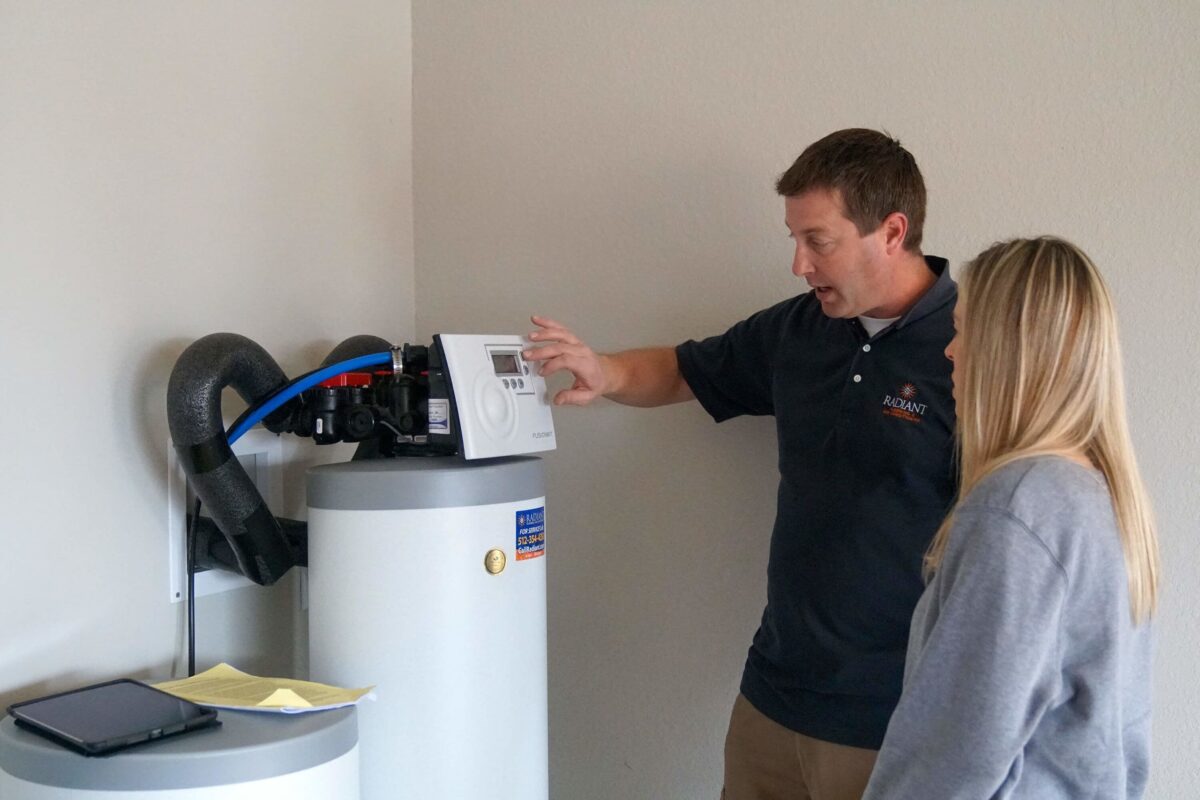Hard water causes issues at your home, your health, and even your wallet. With the help of a water softener, you can battle against those issues by making water better. As a result, your appliances will last longer, and you will be sure to drink safe water.
The benefits of having soft water include the following:
- No more stains or deposits on showers and tubs
- Faster household cleaning
- No more spotting on glassware and dishes
- Lower energy bills by improving equipment efficiency
- Lathers quickly, so no need to use a lot of soap
- Softer, brighter, and whiter clothes
- Extends the life of appliances that use water
- Softer and smoother skin
Process of Water Softening
A misconception about the process of water softening is the idea that salt softens the water. The reality is, the resin beads inside the tank are the ones softening your water by filtering chemicals. Salt serves to clean these tiny beads in every cycle, making the system remove water hardness continuously.
Below is the process:
- Hard water from the main well or pipe enters your house and goes to the softener.
- Resin beads inside the tank hold the minerals and remove them at the same time.
- Soft water then leaves the tank then passes through plumbing, and comes out of the faucet.
Regeneration Cycle
During the regeneration cycle:
- Brine is made and goes with the softener.
- The solution passes the tank, cleansing the beads. Then, the backwash cycle occurs.
- The minerals and brine are then flushed out into the drain.
The regeneration cycle lasts for two hours. Note that you must not use water while the said process is ongoing. That is because while ordinary water fills the heater, hard water may cause equipment buildup. All water softeners require salt-saving solutions and initiated regeneration to conserve water and salt.



